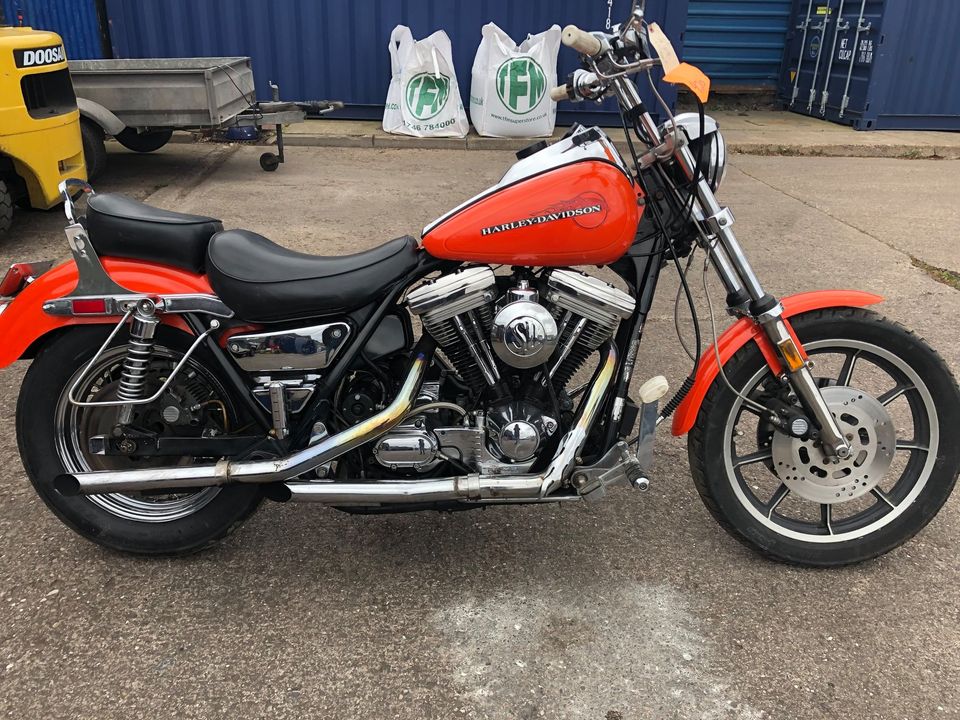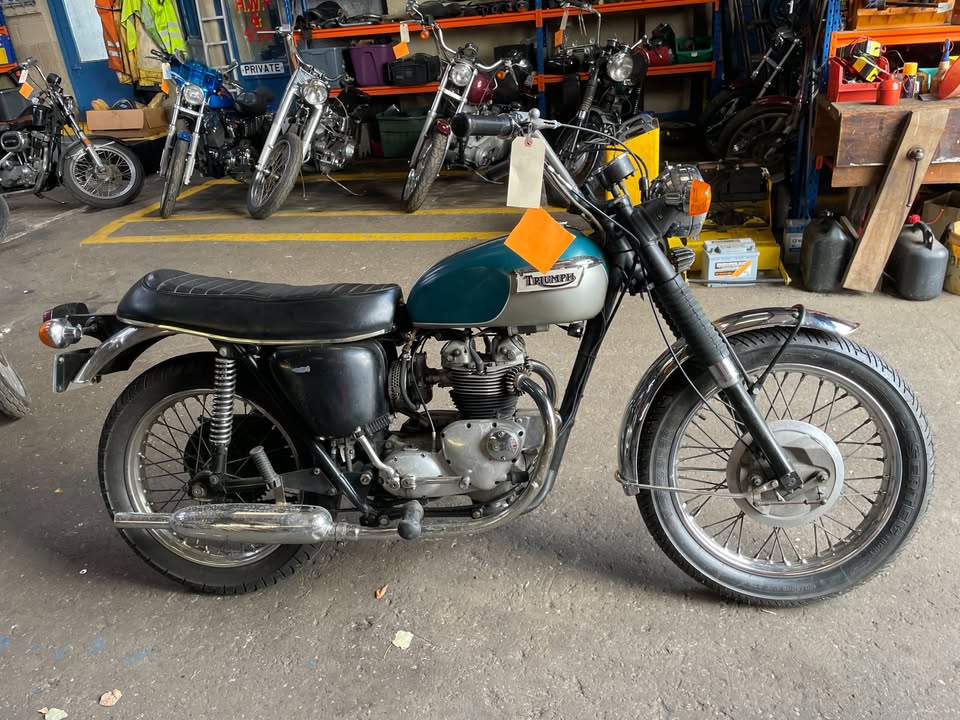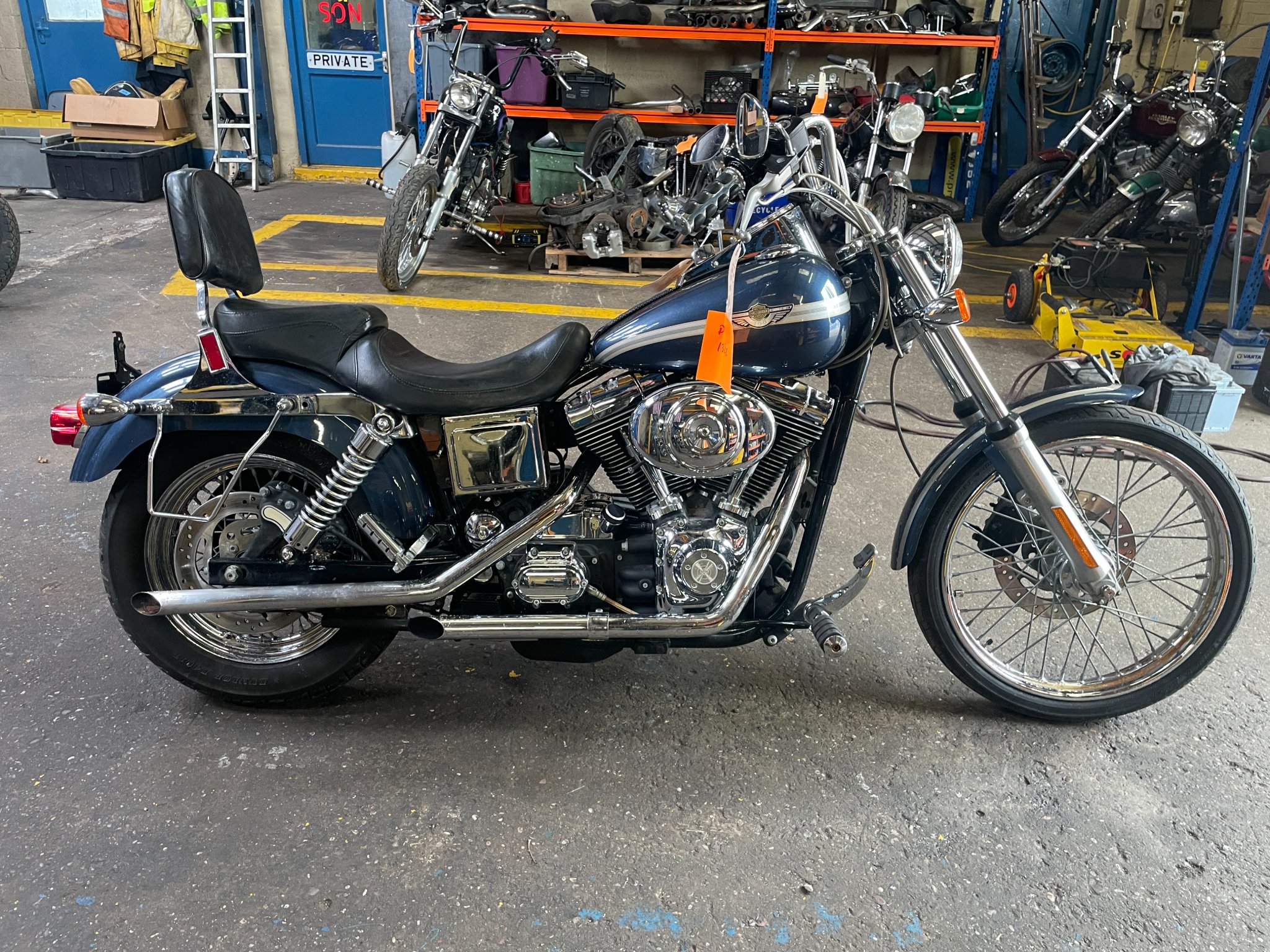Classic and Classy Motorcycles Ltd
Vintage and Classic Motorcycle Importers
1986 Harley Davidson 1340cc Evo FXRS

1986 Harley-Davidson 1340cc Evo FXRS: The Dawn of the Evolution Era
Historical Context
The 1986 Harley-Davidson 1340cc Evo FXRS marks a significant milestone in the annals of Harley-Davidson's storied past, heralding the arrival of the Evolution engine across its Big Twin models. This transition signified a leap forward in terms of power, reliability, and engineering, setting a new benchmark for the brand's performance standards. The FXRS model, with its sleek design and enhanced capabilities, became a symbol of this new era, blending the classic Harley-Davidson aesthetic with cutting-edge technology.
• Year: 1986
• Make: Harley-Davidson
• Model: FXRS
• Engine displacement: 1340cc (81.7 cubic inches)
• Compression ratio: 8.5:1
• Carburetion: Single 4-barrel Keihin carburetor
• Ignition system: Electronic ignition
• Cooling system: Air-cooled
• Fuel capacity: 4.2 gallons
• Wheelbase: 62.5 inches
• Horsepower: Approximately 70 hp
• Torque: Approximately 70 ft-lbs
• Transmission type: 5-speed manual
• Suspension system: Telescopic fork front, dual shocks rear
• Braking system: Dual disc front, single disc rear
• Dry Weight: Approximately 600 lbs
• Top speed: Approximately 110 mph
Design and Features
The FXRS model of 1986 was designed to offer riders a blend of comfort and performance, featuring a low-slung profile, mid-mounted foot controls, and a stylish, yet functional, layout that appealed to both long-distance riders and urban cruisers. Its integration of the Evolution engine was complemented by a chassis and suspension setup that provided improved handling and ride quality, making it one of the most versatile models in the Harley-Davidson lineup.
Riding Experience
The riding experience on the 1986 Harley-Davidson FXRS is characterized by a smooth, powerful delivery of performance, thanks to the Evolution engine. The bike's agility and stability, combined with its robust power output, make it a joy to ride in a variety of conditions. Whether cruising the highways or navigating city streets, the FXRS offers a dynamic and engaging riding experience that is quintessentially Harley-Davidson.
Legacy and Enthusiast Appeal
The introduction of the Evolution engine in models like the 1986 FXRS represented a turning point for Harley-Davidson, ensuring the brand's competitive edge in the motorcycle market for years to come. The FXRS model, in particular, holds a special place among enthusiasts for its role in this transition, offering a perfect mix of traditional Harley-Davidson values and modern performance. Its legacy continues to resonate with riders and collectors who appreciate the significance of this era in the brand's history.
Find Classic Motorcycles
Stay in the loop - Subscribe for Updates
One email notification a month when a new shipment arrives.
 1971-Triumph-500cc-T100c-Tiger-Ref-1561
1971-Triumph-500cc-T100c-Tiger-Ref-1561 2003-Harley-Davidson-Anniversary-Dyna-Wide-Glide-FXDWG-1450cc-Ref-D1322
2003-Harley-Davidson-Anniversary-Dyna-Wide-Glide-FXDWG-1450cc-Ref-D1322